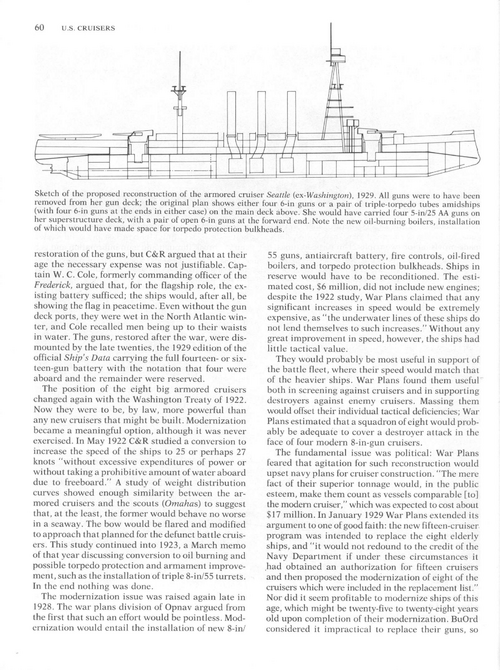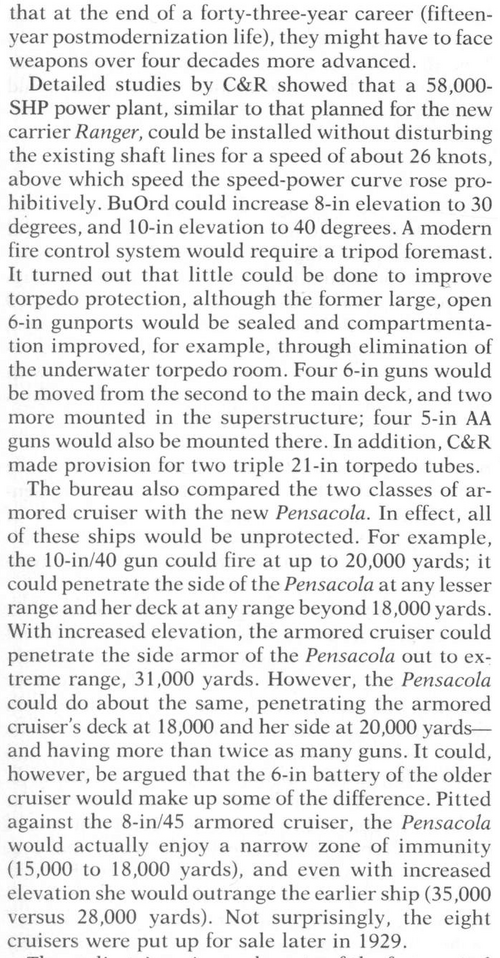Dilandu
I'm dissatisfied, which means, I exist.
Yes, but the long-range hit probability is practically nonexistent with just four guns and relatively slow reload. Pauses between salvos would be long enough to make straddling very tedious process. And even if target was sucsessfully straddled, 2-4 gun salvoes simply aren't very efficient in terms of saturating the dispercion area.Well, in terms of hitting power, the 4 10" are significantly more powerful than any 8" gun. The US 8"/55 fires a 260 lbs. shell while the 10"/40 fires a 510 lbs. one that could probably have been increased to 560 lbs. with a better "super heavy" round design as the US did with other large caliber guns.
To put it simply - yes, IF "Tennessee" managed to hit the target, it would be quite a hit. But it most likely would not be able to do it - at least not before target would hit "Tennessee" several times first (and quite likely wreck her fire control)
Their armored deck was only 38 mm thick; "Pensacola" actually have more armor over her magazines.The Tennessee class also has significantly more armor than any US heavy cruiser up to the New Orleans class.
If I recall correctly, the real proposal of 1922 was to get rid of 10-inch turrets and put triple 8-inch turrets in their place.I'd have to see what could be proposed for secondary armament on these ships. If some of the 6" battery were retained and could be given better elevation the combination of 10" and 6" guns could be very effective as both can fire even at 15 degrees elevation to about 20,000 yards.
I see the big drawback being you have to practically build a new ship to modernize these cruisers.





